
Best Things To See In Pristina Kosovo
Kosovo, derived from the Serbian name meaning "field of blackbirds," boasts a rich history. Slavs ruled in the 6th-7th century, followed by Bulgarian rule in the 9th century. The Serbs later took control in the 12th century, until the Ottoman Empire's domination, lasting for centuries. Serbia regained control in 1913. While modern Pristina lacks medieval buildings due to the 1990s war, its layered beauty unfolds when explored and shared with locals. Join me on a journey to discover the best things to see in Pristina, as I transformed from initial hesitation to cherishing this city and its people.
Quick itinerary/Key Takeaways
The Kosovo border is only about 30 minutes from Skopje so it makes a great day trip with a guide if you would like to see the youngest country in Europe. While Kosovo isn't recognized by all countries as an independent country, because I live in the USA and our country does acknowledge their independence I will refer to it as a country in this article.
Please know that if you go to Kosovo, you need to make sure you do this AFTER visiting Serbia as there have been reports that they will rip your Kosovo Stamp out of your passport. Most car rental companies also do not allow you to take the car into Kosovo. This can make it difficult to find places to cross borders if visiting multiple countries in the Balkans and certainly adds to drive time.
When visiting, know that they do not widely accept credit cards, but they do use Euro. Make sure you have some of this cash on hand.
- Skopje (North Macedonia) to Pristina | Departures every 30 minutes | 2.5 hours | €5
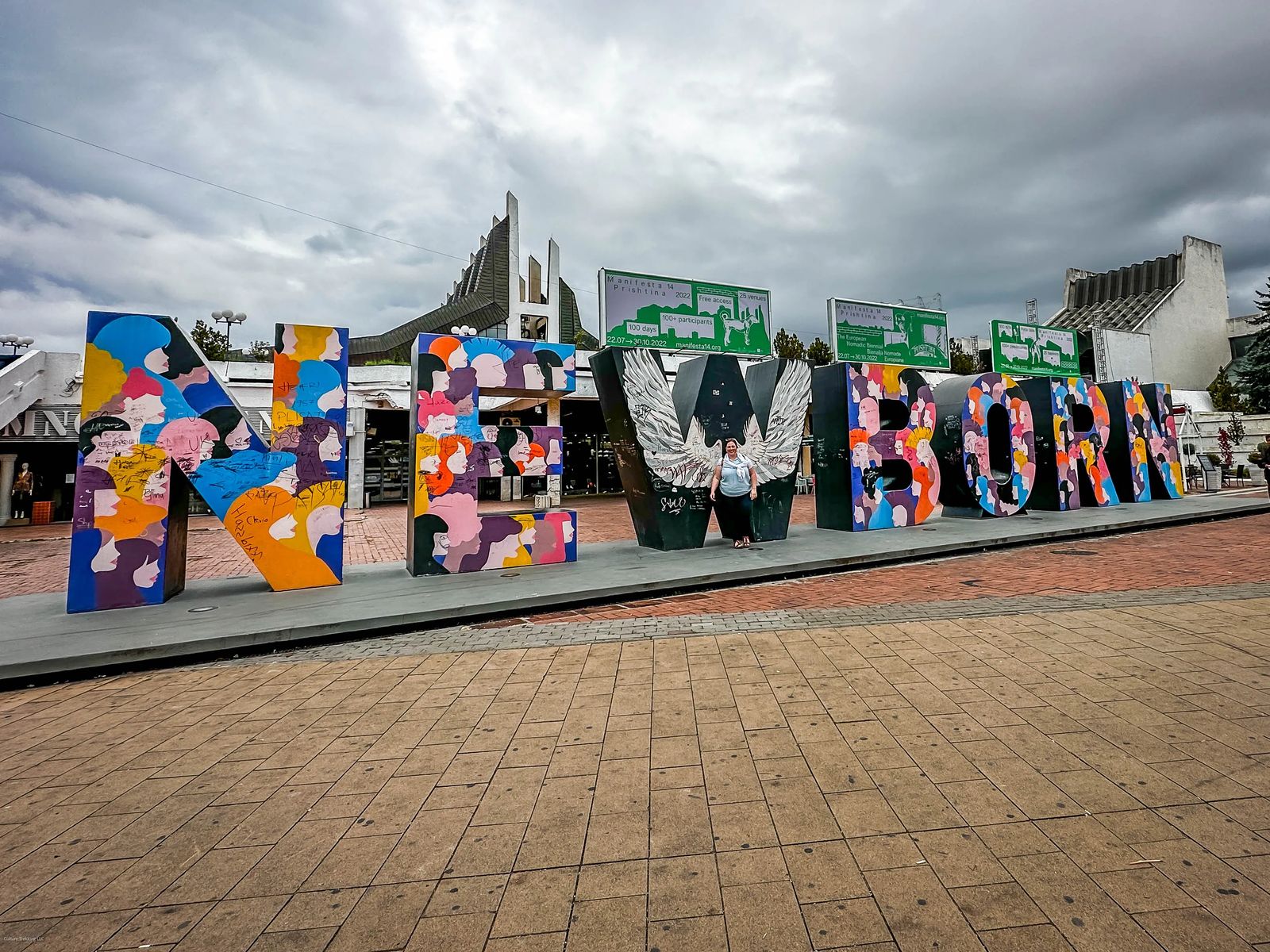
Visit The Newborn Monument
The Newborn sculpture was erected to celebrate Kosovo's formal declaration and independence from Serbia on February 17 2008. Every year (on the day of independence) they change the theme of the monument to reflect values, people and cultures of Kosovo. In 2022 (the year I visited) it was dressed for the women of Kosovo, all they contribute and sacrifice as theirs is the work of angels on earth.
The sculpture is 10 ft (3 m) x 79 ft (24 m) and is a lot bigger than it looks in pictures. Just behind the Newborn sculpture is the Palace of Youth and Sports. Inside you will find two arenas with 8,000 to 3,000 spectators. There is also a shopping mall, indoor parking, two convention halls and a library. There is a basketball court, soccer field, handball, volleyball, and numerous other sporting competitions.

See The Odes To USA Politicians That Helped Their Independence
There are so many statues and odes to US politicians and presidents. The one above is of Madeline Albright, there is another of Bill Clinton (with a ginormous hand). The people here LOVE the USA, and you can feel it in the buildings, the stores, and all the American flags and monuments.
Why? Well the USA was an instrumental part in helping Kosovo get its independence. How? We bombed the capitol of Serbia. Soooo yeah.....but YAY for Kosovo! There is a lot the USA has done good with, but also a lot that the citizens don't realize happens on the power play front of things. Serbia was committing war crimes via four of its Generals - the USA stepped in along with the EU and the UN. That is a very very very very simplified version of it - and I don't want to get too much into the politics of all of it because the tensions are still there and you can see it and feel it when visiting Serbia and Kosovo. For example, if you visit Kosovo - get a stamp in your passport at the border - and then try to go into Serbia. Serbian border guards will rip out the page that has a Kosovo stamp in it. You also cannot take many rental cars from other European countries into Kosovo.
People here don't want to talk about the war, they want to talk about the way forward from it. They want to be recognized by all nations, have a passport they can travel with, be able to go to schools throughout the world so they can bring that knowledge back to help their country.
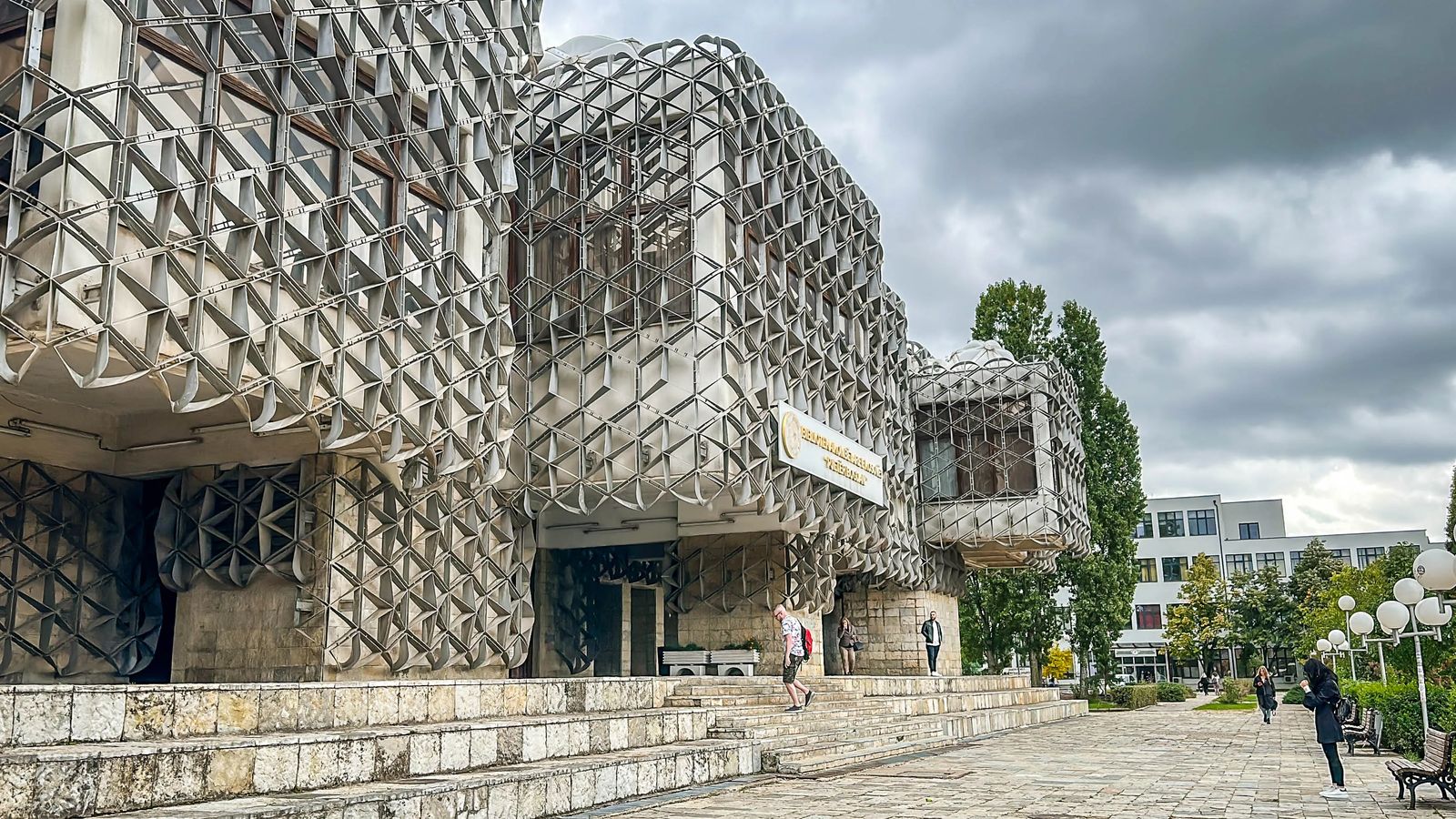
National Library Of Kosovo
A lot of people call this the ugliest building in Europe, but I really disagree. It is a complex exterior that keeps the eye moving from one line to another. If you take a step back, it might look like a sort of Prison - but someone else might say it looks like chainmail for protection. This is exactly what art is supposed to do - create conversation and allow for different interpretations.
Inside you will find artfully designed foyers for art displays, geometric staircases and domes. There are beautiful brick mosaics, and a play of light and silhouettes throughout. This Library contains, collects, preserves, and makes documents about the heritage of Kosovo accessible to all. While the building is new, there were libraries that existed in Kosovo that dated back to the 14th and 15th century.
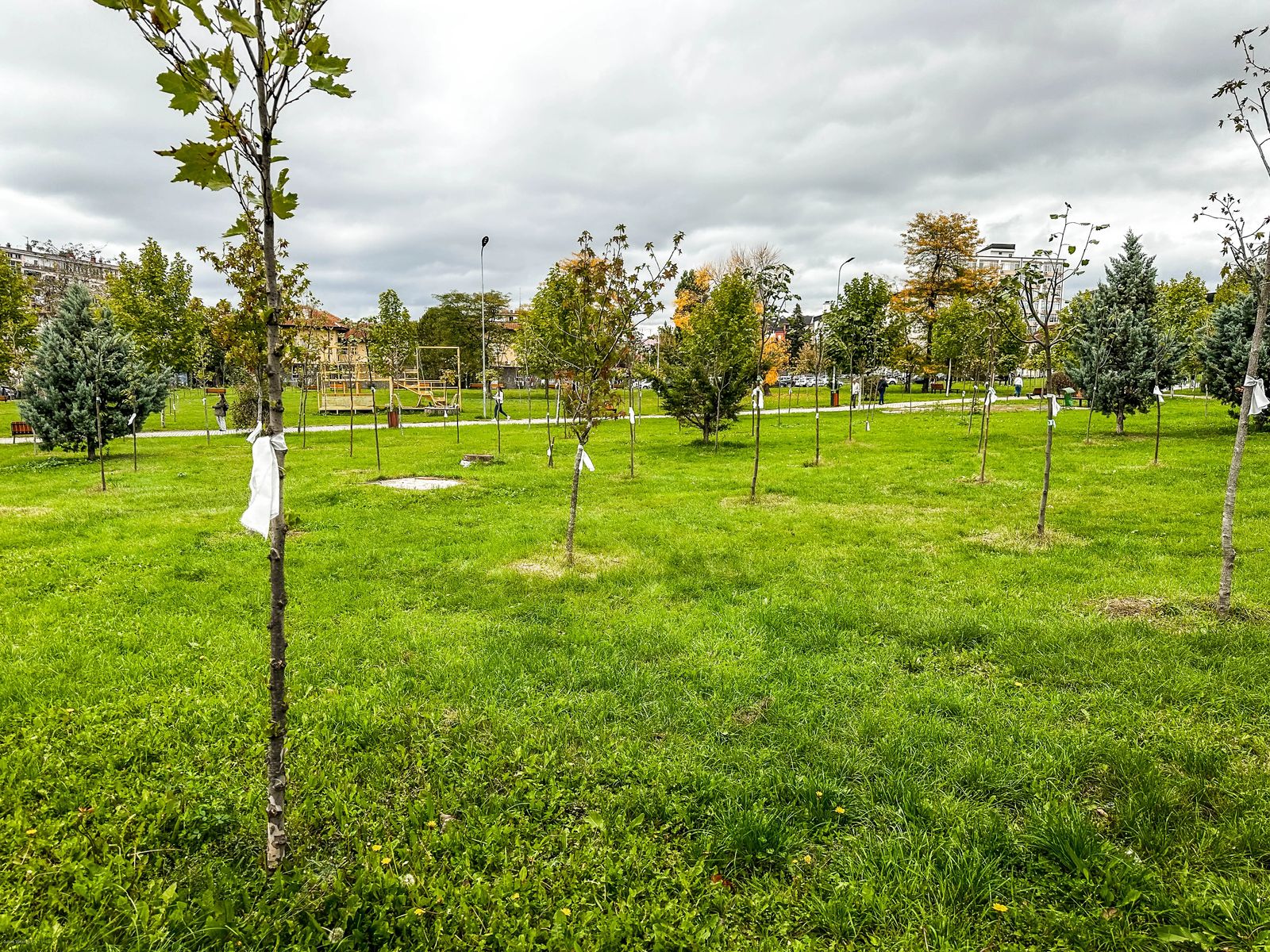
Memorial To Forcibly Disappeared Persons
While we were visiting the Library, I noticed the white ties on the trees. I asked our guide what this was about, and he informed us that this is a sort of memorial for those who are still missing from the war in the 1998-1999 war and to help reiterate a demand for justice.
Just outside the parliament building you will also find a white marble monument now turned bright pink (as of July 2022) as it was wrapped in reflective foil to try to upkeep the monument. The monument is said to also memorialize those that were lost, it is called "To Those We Miss". The inscription is in five official languages of Kosovo: Albanian, Serbian, Turkish, Romani and English. After the restoration of the Monument, it still falls into disrepair frequently because of those who disagree with Kosovo being independent and its own country.
There are still 1,621 missing people from the Kosovo War that have not been found - mainly ethnic Albanian but with some Serbs and Roma. April 27 1999 in the cities of Meja and Koranic 377 ethnic Albanians were murdered by Serbian forces. It wasn't until May 1999 that the Kosovo parliament enabled prosecution for these crimes. There are still thousands of testimonies about the war that are being processed, and indictments for those who were responsible for those deaths have not yet been prosecuted. in 1991 - 150,000 ethnic Albanians were expelled from their jobs. They were maltreated, detained, stopped at checkpoints, refused entry to school and punished for minor things.
What some overlook though is the wars and genocides that happened in the 1940's here where Italian troops and German troops were involved. Serbs were termed colonists by Mustafa Merlika-Kruja the Prime Minister at the time, many Jewish civilians were handed over to the German SS. Mayor Hysen Prishtina, provided safe passage for many Jewish families into Albania and were hidden and given fake names, saving over 2,000 Jewish lives. Today there are only 80 Jewish families left in Kosovo, when it was estimated that there were more than 3,000 Sephardic Jews from Spain and Portugal that lived here from the 15th century. It is estimated that 10,000 to 250,000 ethnic-Serbs were forcefully deported from Kosovo during these wars in the 1940's and 1960's.
If we take a step back and look at this from a generational perspective - can you see the generational trauma that gets passed down? In my opinion (take it or leave it) the tensions will keep happening, wars will keep cycling until there is a generation that says 'ok - let's put that past behind us and move forward'. This is vastly over simplifying it, I know, if I was driven from my home, or generations of my family wiped out - I would be beyond angry and want justice. Where does the cycle end though? Where and when do the ripples stop? That is question the people in this region will have to answer, I'm definitely not qualified to do so.
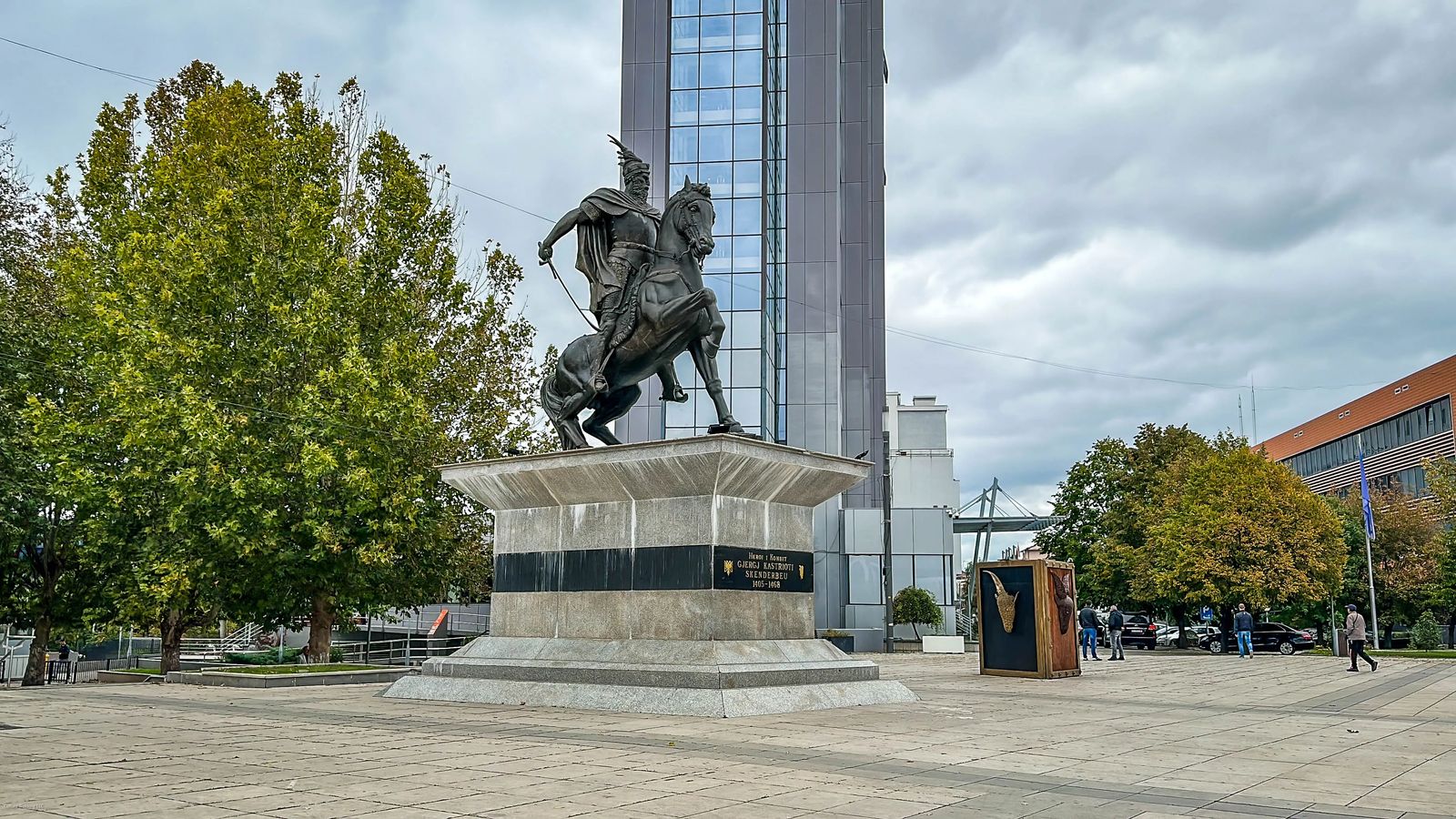
Skanderbeg Statue
This statue of Skanderberg is in the centre of Pristina, he was a medieval Albanian who fought against Ottoman forces. On one side of this square you have Rugove Square named after the first Kosovo President Ibrahim Rugosa and the other side you find Mother Teresa Boulevard.
Skanderbeg was an Albanian feudal lord and military man that was a member of the Kastrioti family. Surprisingly, he was a hostage in the ottoman court to sultan Murat II and lived with them and was educated by them for 20 years! After rising through the ranks, he played his cards, and flipped sides back to the Albanian side and defeated the Ottomans. He ruled what is now Albania, North Macedonia, Greece, Kosovo, Montenegro and Serbia. He strengthened his ties with Naples, playing to the protective strengths of Italy. He was considered to be the head of a crusade of Christian resistance in against the Ottomans and continued to do so until his death.

Cathedral Of Saint Mother Teresa
The first stones of this Cathedral were laid in 2005, by the first Kosovo President (a Muslim) Ibrahim Rugova. The cathedral officially opened and consecrated in 2017 and is considered the largest Cathedral in Kosovo. The stained glass windows indie are beautiful, and the pews are adorned with eagle heads.
Some of the biggest Christmas celebrations happen in this cathedral with a beautiful solidarity of Catholic and Muslim citizens coming together to celebrate the holiday season.

Mother Teresa Boulevard
Walk down Mother Teresa Boulevard, it is a 1.5 mile walk that takes you past hotels, restaurants, statues encouraging kids to read, roasted chestnut food carts, perfume shops and second hand book stores.
This is a pedestrian only street that provides a quiet space to hang with friends, have outdoor meetings, and a small farmers market pops up every morning (that the weather is good) providing a way for far reaching farmers to make some extra cash. At night you can find bars that open up and serve craft beer and local wines.
If you are here at Christmas time, there are lights that are hung over the walkway and look like you are walking underneath a river of Christmas lights (really is a sight to behold).
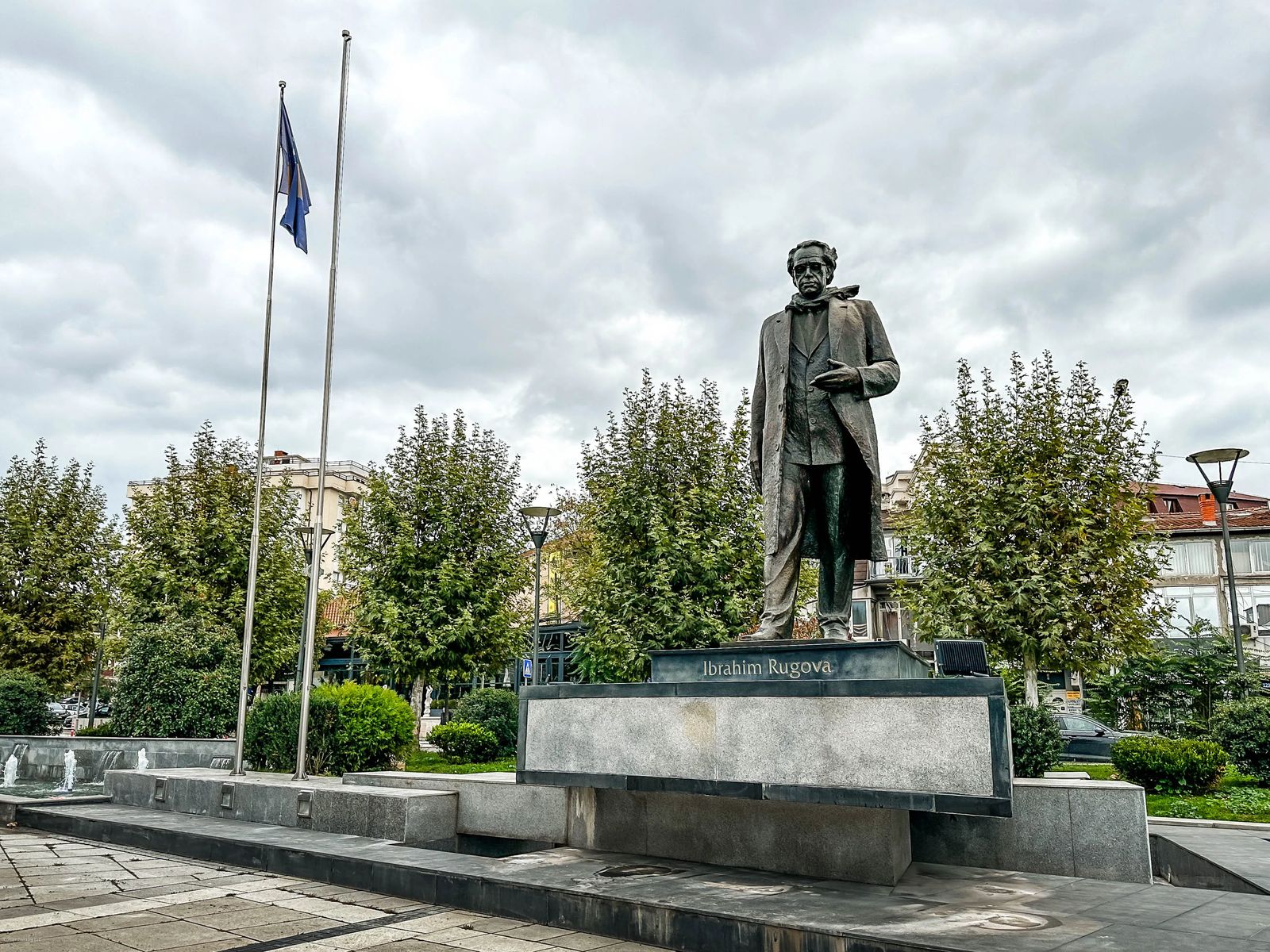
Ibrahim Rugova Statue
Recognized as the first President of Ibrahim Rugova served from 1992 to 2006. He advocated for a peaceful resistance to Yugoslavia. As part of the Kelmendi Albanian Clan, his roots here ran deep and had a 90% approval rating with the ethnic Albanian population. His father and grandfather were both executed in 1945 by Yugoslav communist. While not everyone loved him, even escaping an attempted assassination in 2005 when a bomb exploded near his car. Being a life long chain smoker, Rugova eventually died January 21 2006 from Lung Cancer.
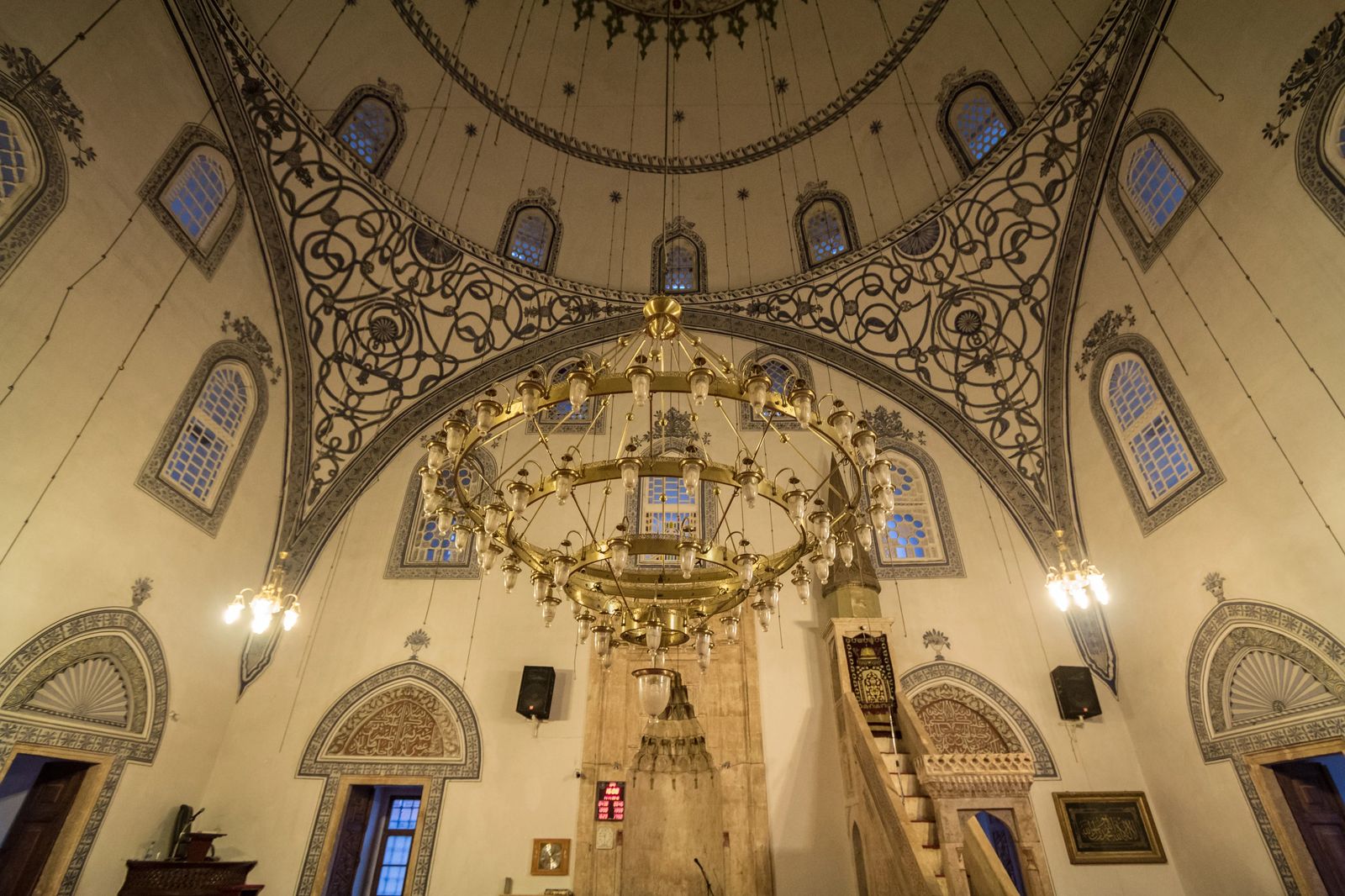
Imperial Mosque (Džamija cara) Or Faith Mosque
Built in the 15th century by Sultan Mehmed II and is made of stone with stucco and beautiful paintings inside. It was built in honor of Suleiman the Magnificent. There is a beautiful stone ablution fountain just outside of this mosque. There are more than 500 mosques in Kosovo, but this is the largest of them all. It is a complex of three buildings with a main hall, gallery with surrounding courtyard, and the large prayer hall.
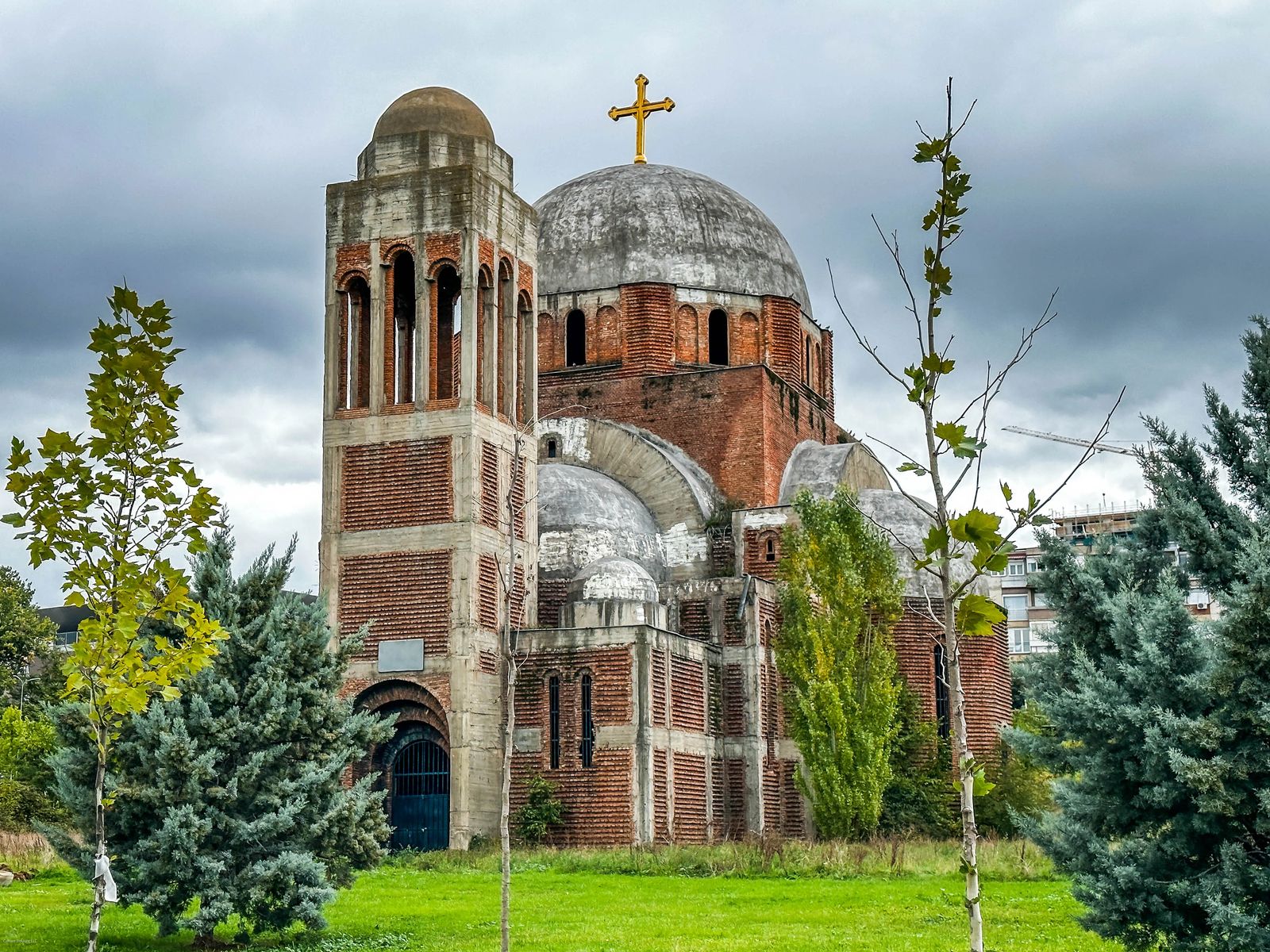
The Church of Christ the Savior
This church is basically a representation of the tensions between Serbians and the people of Kosovo. The people of Kosovo tie the church to Slobodan Milosevic's brutal rule, and say it was illegally built. While the Serbian side state they have detailed documentation with permits. If those of the Serbian Orthodox diocese try to open the church to practice any kind of worship they are stopped by the Police, as any kind of worship there will only stir tensions they are trying to move away from. So the church stands there as an eye sore, and hot topic of tension. The people here don't talk about it, but the Serbian Diocese that are here, certainly make sure to notify the Serbian papers if they are prevented to worship here. They have made it very clear that if there is any attack on the cathedral, they will view it as an open attack on the Serbian Orthodox Church.
Please note there are other churches in the area that the Serbian Diocese can and do practice their religious rites, but only attempt to open the church it seems on important holidays to them. I can see how both sides would feel about anything happening to or inside this building. It is a tough and very delicate situation indeed for a nation trying to recover still.
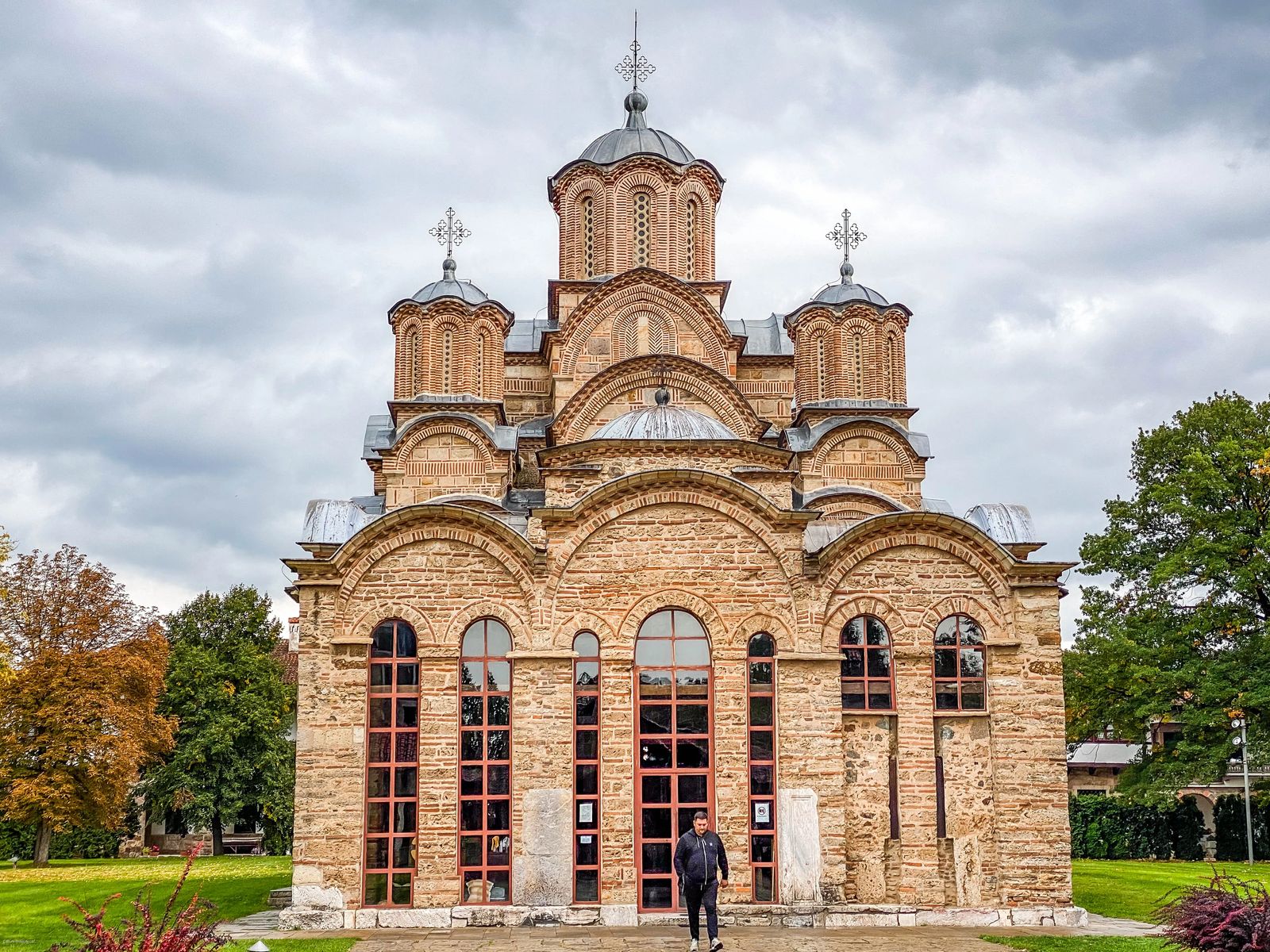
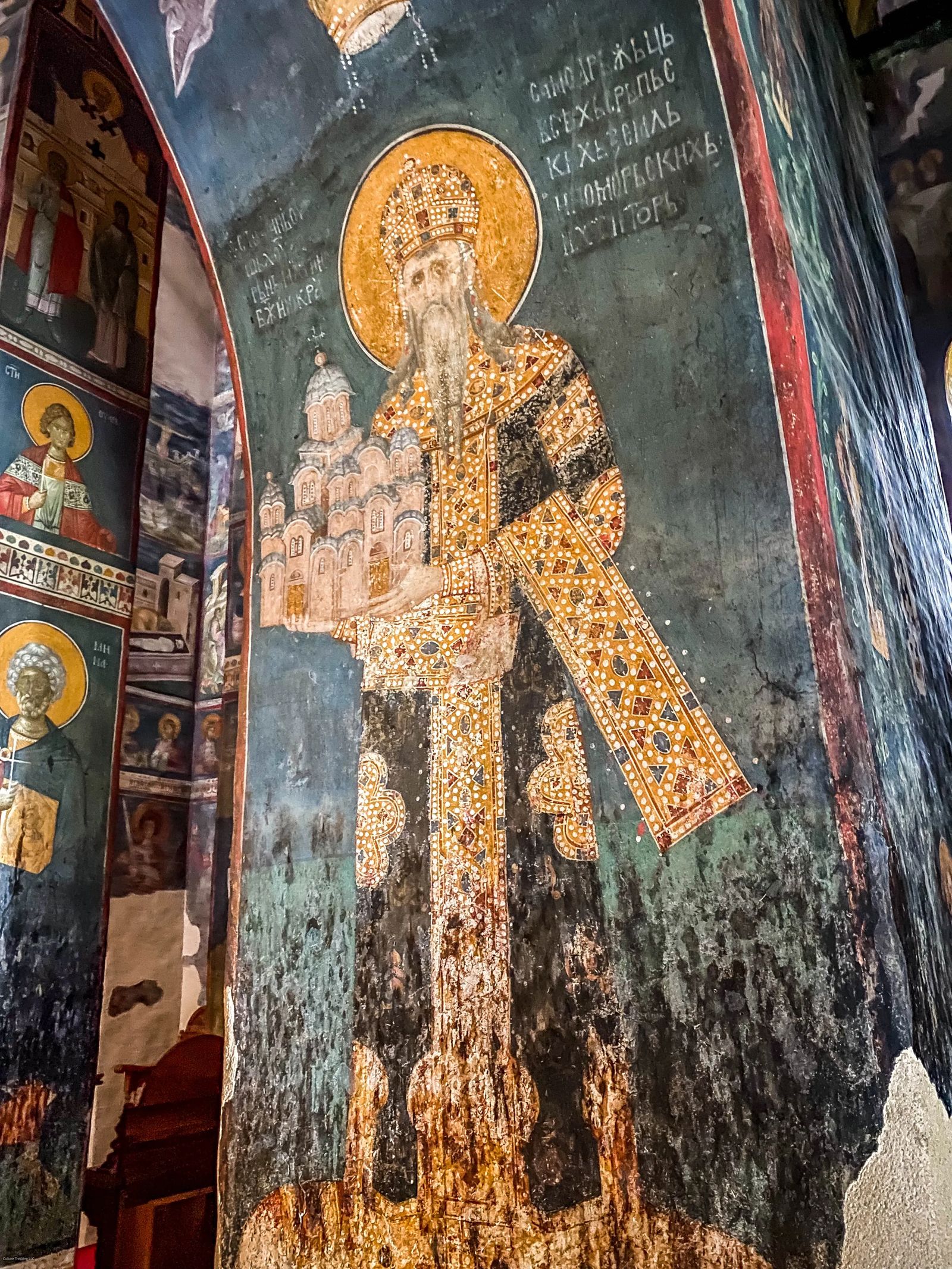
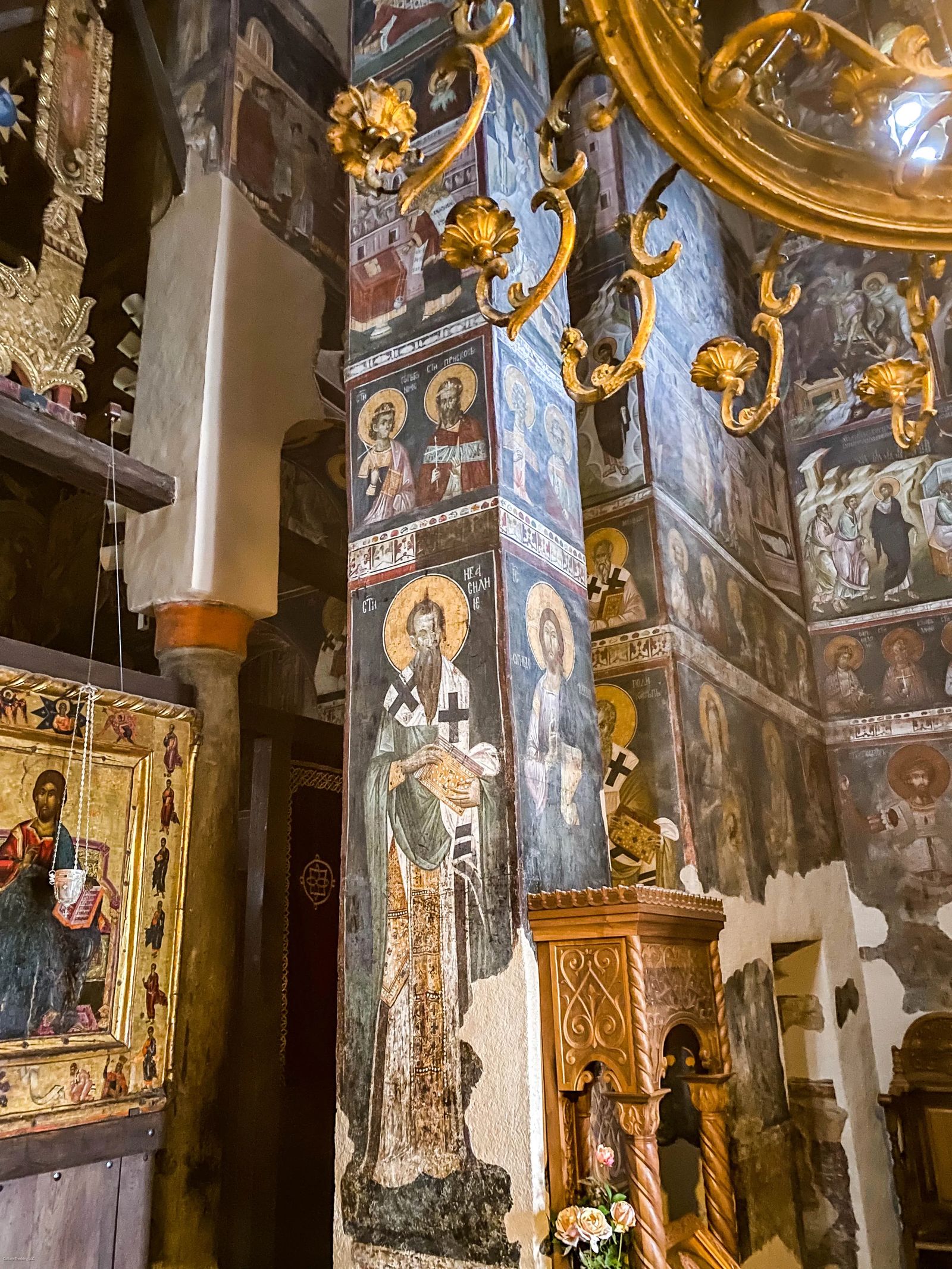

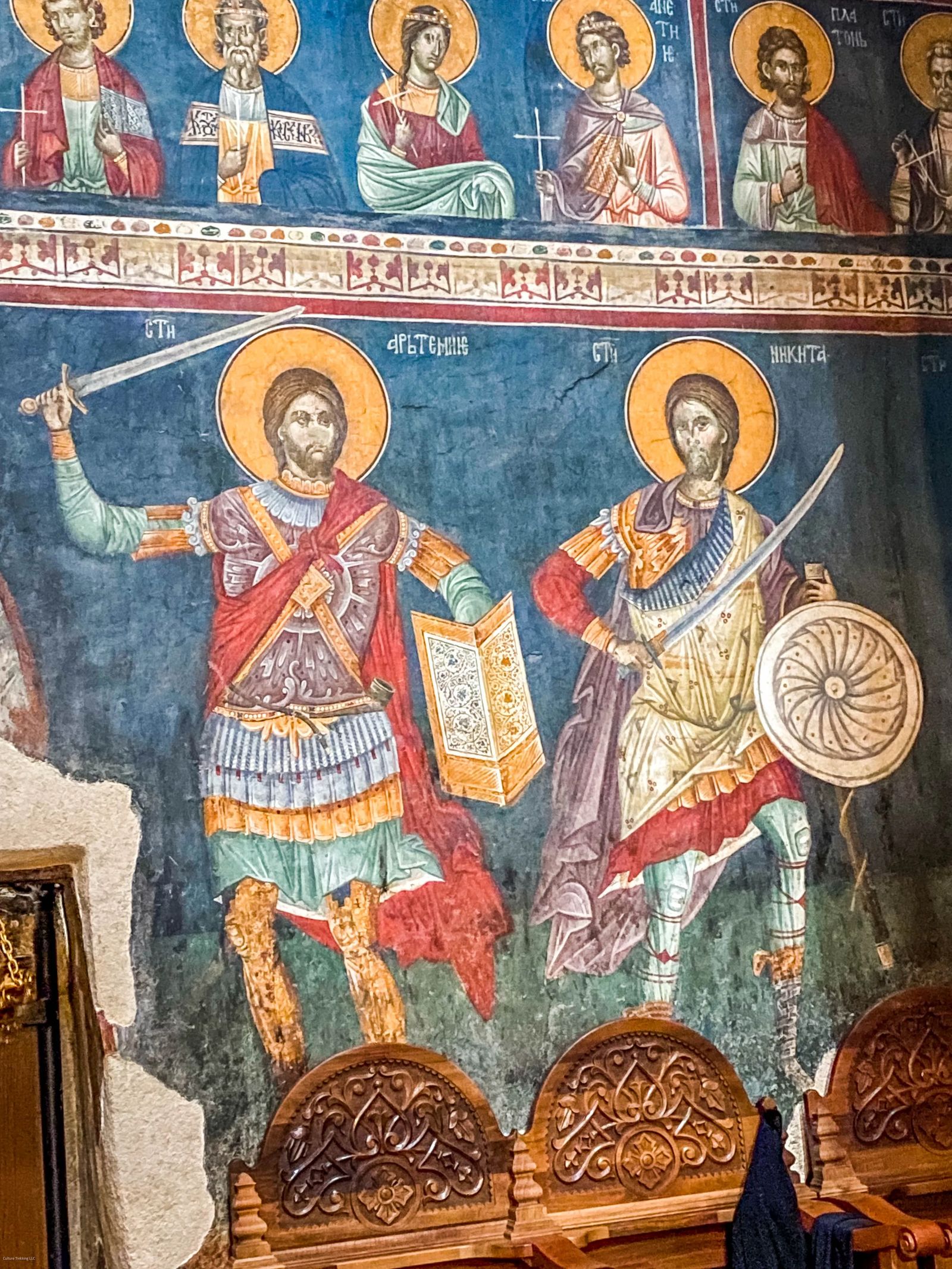
Gračanica Monastery
If you are looking for a side trip and to visit a UNESCO site, then stop at the Gračanica Monastery. This is a Serbian Orthodox Monastery built by Stefan Milutin in 1321. There is a comment on the souther wall inside the Cathedral that says "I have seen the ruins and the decay of the Holy Virgin's Temple of Gračanica, the bishopric of Lipijan, so I have built it from the ground and painted and decorated it both from the ground and painted and decorated it both from inside and outside".
You will see a double inscribed cross inside, with four pillars that raise a central dome. There are four domes that abutt the main dome giving the outside structure the appearance of a crown. The Frescoes show the earthly life of Jesus and the religious calendar - like the Festival Cycle, the Passion, and the Miracles of Christ.
If you look at the second to last photo on the right, you will see a white band on the pole with a dark spot. This is what the frescos looked like prior to restoration.
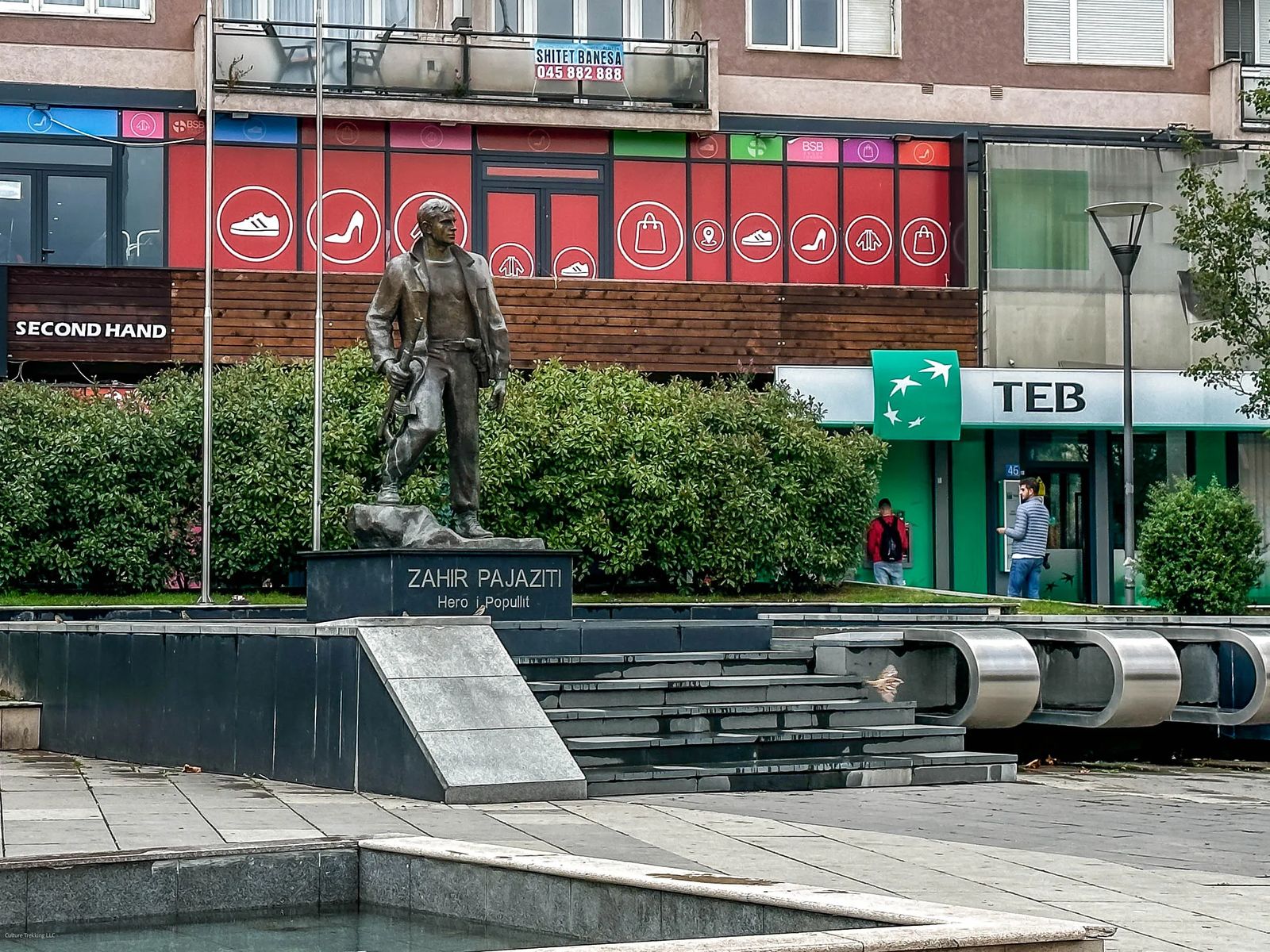
Zahir Pajaziti Statue
This statue celebrates the first commander of the Kosovo Liberation Army Zahir Pajaziti Statue. The same year that he was made part of the main KLA staff, he was killed in a gunfight with the Yugoslav army in Vushtrri in 1997. There are lots of national organizations and celebrations that take place in this square throughout the year, and is very close to the statue of Mother Teresa.

Heroinat Memorial
This memorial was unveiled in June 2015 as a way to honor the women's experience in the history of the country and sacrifices during war. The women here were very active in the war, both as soldiers and as non-violent resistance. Often women receive additional wounds that are not often seen, as those resulting from sexual violence.
The image of the woman is a digital rendering of every single Kosovan woman that was affected during the war. Most of the images were taken from photographic research, and if you walk up closely you will see it is additionally made from medals with the womans face on it as well. There are 20,000 tiny pins, each one a name a human being that was raped during the Kosovo War.
If you can bear it, there is a book I suggest reading about a personal account of the women here - the book is called "I Begged Them To Kill Me".
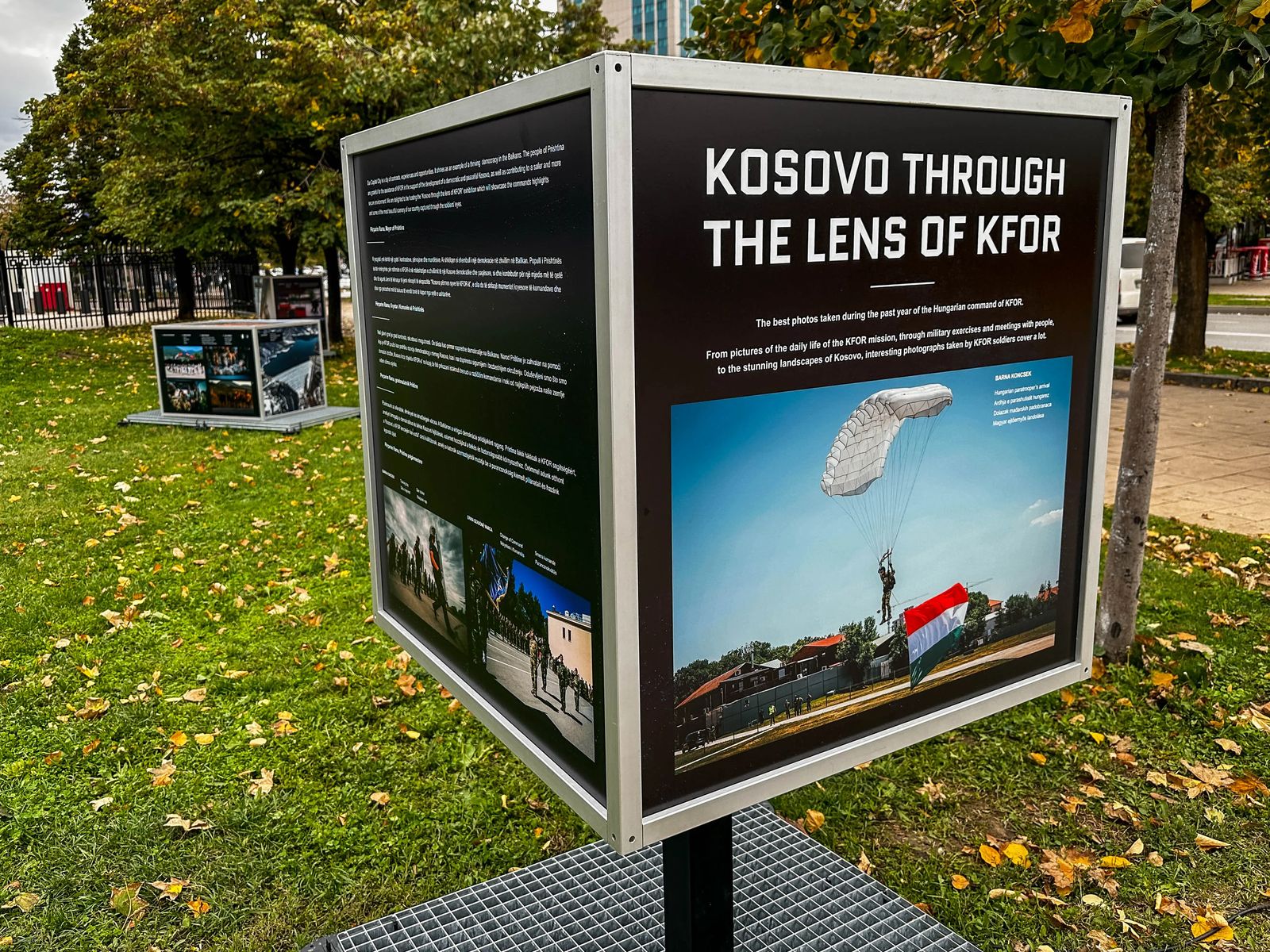
Kosovo Through The Lens Of Kfor
No one really wins in war, and the first casualty of war is truth. Remembering the past, while continually moving to the future is the only way to survive. Kosovo is still healing from the war, while continually having micro-aggressions to dismantle their partially recognized independence. Memorials pop up like this one, where photographs, stories and videos are collected to remember what was lost. Kosovo through the lens of Kofor provided a deeper and more emotional look into how the people here survived. If you see memorials like this, I highly suggest stopping and taking time to educated yourself a little more on what happened.
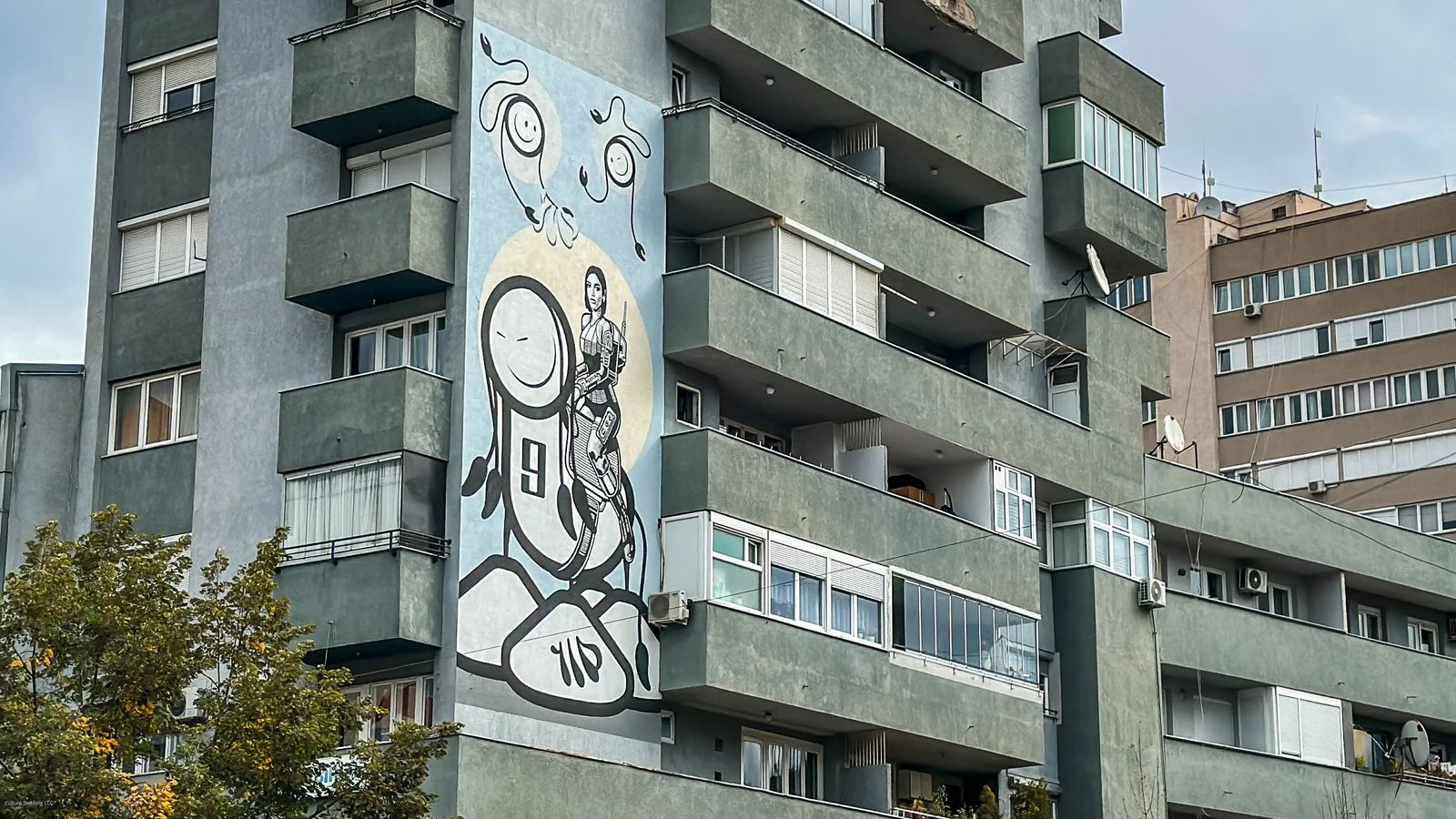

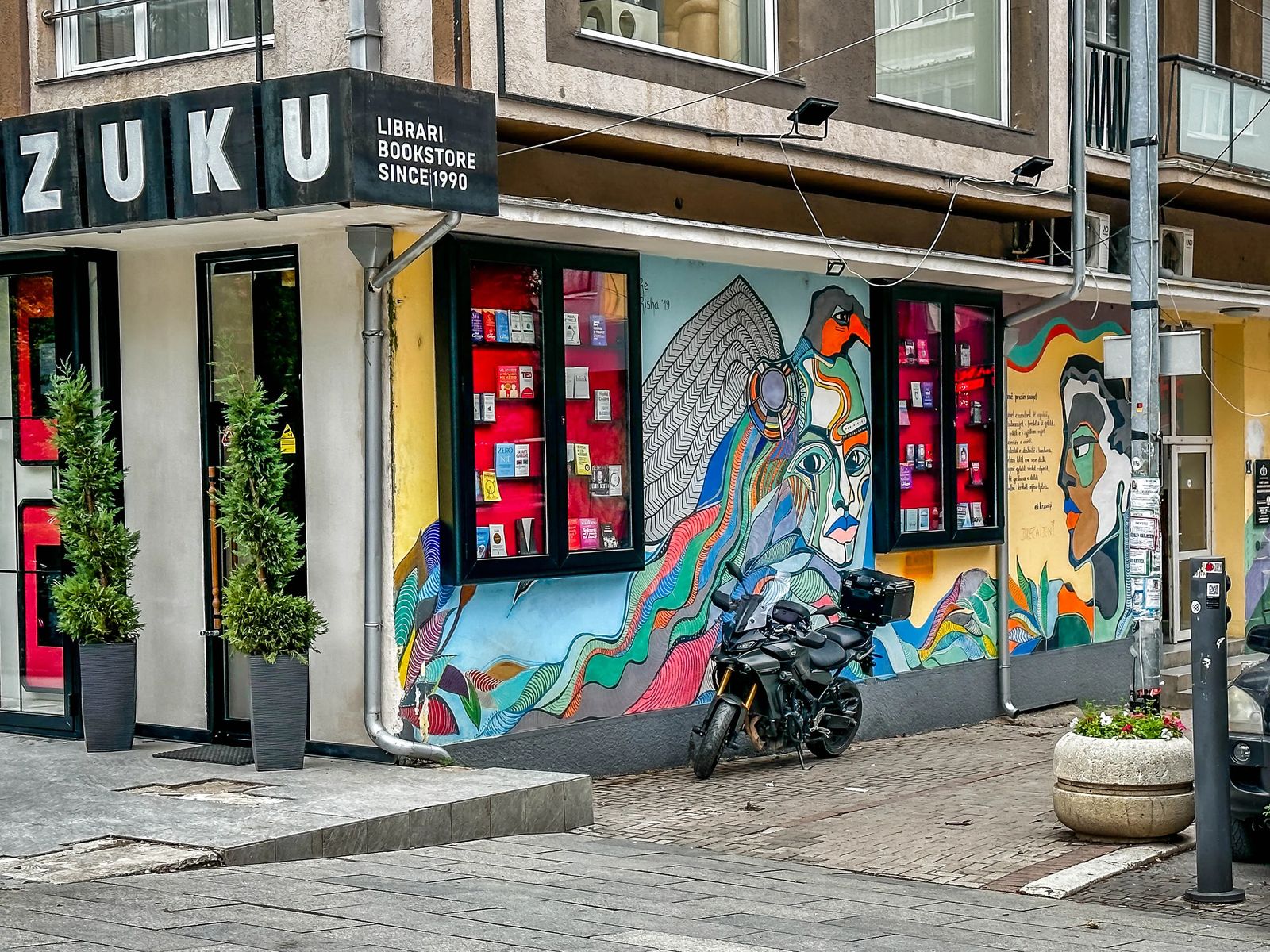
Street Art In Pristina
The street art in Pristina is quirky, colorful and well worth a wander through the center of the city to see some of it. If you see the photo on the left above, it is actually Dua Lipa riding a numbered human ant (my best guess as to what it actually is). Did you know that she is from Kosovo? She is highly celebrated here, and now memorialized on the side of this building.

My Takeaway Of Pristina Kosovo
Pristina wasn't a place I wanted to go to be quite honest. From the YouTube videos, hours of research to find something I was passionate about talking about - I just didn't find it. When I was there though, there is a certain pride in the way people walk, the area feels safe and inviting, the hotels and bathrooms very modern, I loved the quirky buildings and being able to sit down with my local guide and have tea. While our guide and I didn't get off to a great start (probably my fault), by the end I had tears in my eyes from the warmth and genuine care he showed by answering questions about himself, his family, and his beliefs. We talked about his education and passion for the history of Kosovo, his lifelong pursuit to change the rhetoric of one from looking back to a desire to look forward.
I have to be honest, I came in with a bad attitude about Kosovo - people who have visited only show the surface level stuff here and don't spend time to connect with the culture. Once I put my prejudices aside from misinformation and my own pride, I was able to open up to the deeper meaning of what Kosovo is. Kosovo and Pristina is a place of ancient histories, a conglomeration of cultures, a resilient people who are dedicated to building a positive future with foundations in mutual respect and interfaith dialog. While there are still tensions felt throughout the country, and not everything is settled here, you can see the growth, the tentative steps forward.
You have to sit down observe, connect, and peel back the layers one at a time with an open mind in order to see the true beauty of this place. If you just drive through expecting to see massive ancient monuments, Michelin star restaurants, and parades of museums with costly artifacts - you will entirely miss the point of visiting this place. Hire a local guide, ask about their life, ask about their love of the city, their families, their hopes and dreams, what they believe and then - and only then - will you discover the true beauty of this place, as it lies in the hearts of the people who remain here and would give their lives to preserve what they do have and day by day are building a better and brighter future.

Getting Around Pristina
We did a tour of Pristina as a day trip from Skopje as the rental car we had did not allow us to cross the border into Kosovo. The city itself is VERY walkable, but sometimes Google maps isn't exactly accurate and can lead you on a wild adventure. If you are coming through the airport into Pristina, you can use the mobile app Trafiku Urban to find your way into the center of the city or the major tourist spots.
Guided Tours To Kosovo
Where to stay in Pristina
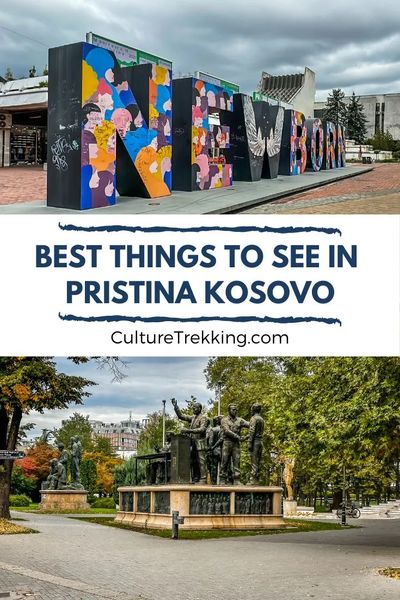.jpg?fit=outside&w=1600&h=2399)
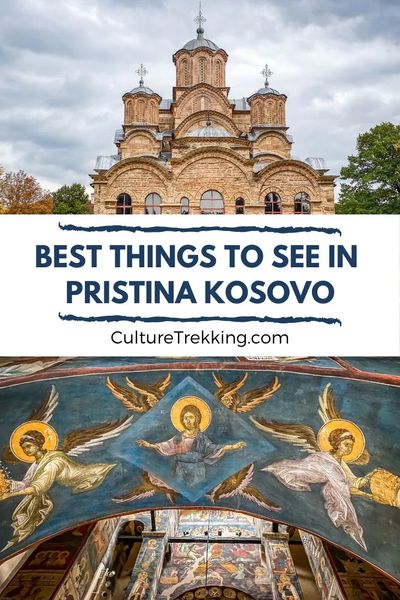.jpg?fit=outside&w=1600&h=2399)
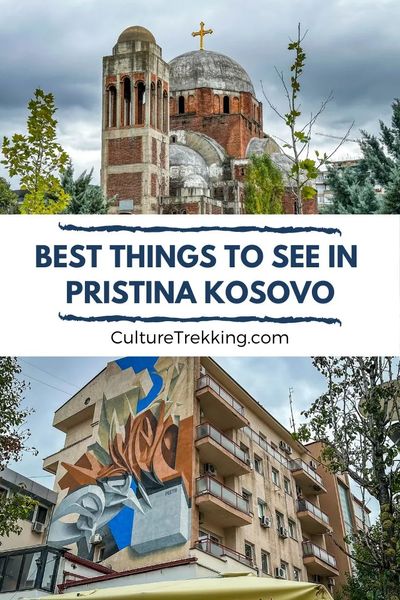.jpg?fit=outside&w=1600&h=2399)
.jpg?fit=outside&w=1600&h=2399)
Latest Articles On Culture Trekking
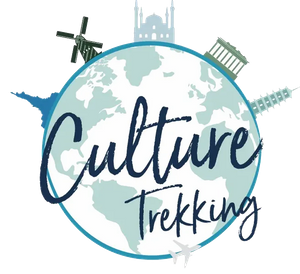

Welcome to Culture Trekking!
My name is Janiel, a leader in the travel industry with over 20+ years of experience with international travel. I specialize in solo female travel, cultural connections, sustainable adventures, food and history to help make your travel experiences fun, meaningful, and delicious. My experience in travel, and my personal story have allowed me to get published in Fodor's Travel, Atlas Obscura, Metro.co.uk, Trip Advisor, and multiple Podcast interviews. You can find me on pretty much every social media channel YouTube, Instagram, Twitter, Facebook, Pinterest, TikTok. To read more about me and my story click here. If you are a brand and would like to work with me, click here.












